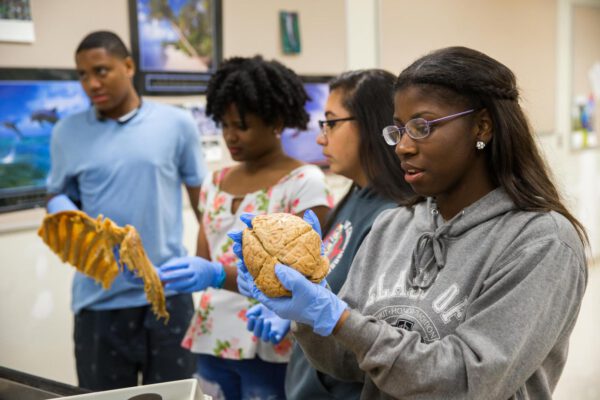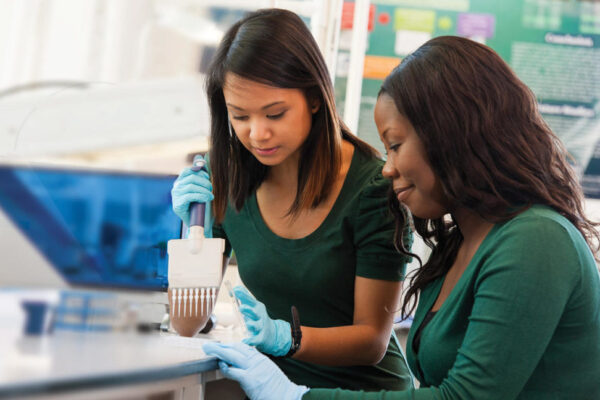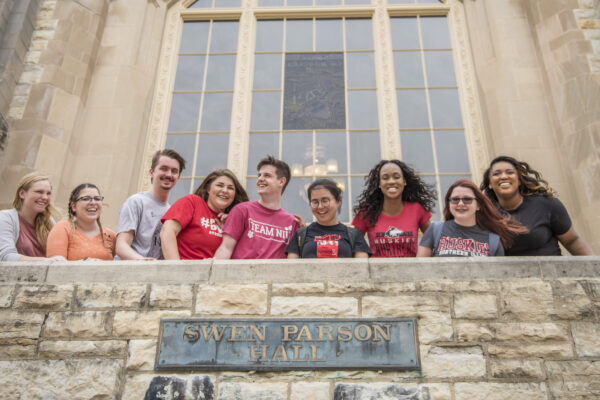By Rachel Friedensen
This post is the fourth in a series on campus climate and STEM success. ACE is partnering with the National Center for Institutional Diversity at University of Michigan on the series.
More students with disabilities of all types—from mobility impairments to intellectual disabilities to mental health illnesses—are enrolling in postsecondary education institutions than ever before. The National Center for Educational Statistics reports that in 2011–12, students with disabilities made up 11 percent of students enrolled in postsecondary educational institutions.
However, even as these students are an increasing presence on campus, fewer of them persist to graduation relative to their peers without disabilities. And still fewer graduate with science, technology, engineering, or mathematics (STEM) degrees. This finding is particularly notable, as relatively equal numbers of students with and without disabilities enter college with the intention to major in a STEM field—the National Science Foundation shows that about 25 percent of students in each group have a declared STEM major.
So what happens between the beginning of college and graduation?
To begin, disability status is not a static dimension of identity. Disability can be more or less pertinent depending on context (social versus academic, for example) and can change throughout a person’s lifetime. The term “disability” also captures a diverse array of diagnoses and experiences. It is therefore difficult to issue prescriptions or descriptions that will be true for every student with a disability.
For example, some research has shown that students with autism spectrum disorder (ASD) persist in STEM fields at levels similar to peers without disabilities and may even possess some STEM-specific advantages arising from their unique cognitive processing. Similarly, the challenges presented by a classroom environment may be different for d/Deaf students or students with hearing impairments than they are for a student with a processing disability, physical disability, or ADHD. Some students have high-incident, non-apparent disabilities—that is, disabilities such as dyslexia and ADHD, which are common among college students and often cannot readily be discerned by untrained observers. Lived STEM experiences for students with disabilities are not necessarily the same across the board—they depend on background, disability type, and support networks, among other factors, including race and gender. Similarly, STEM fields are not strictly uniform and can vary from field to field as well as institution to institution.
Teaching Student with Disabilities in STEM
So why do students with disabilities leave STEM majors? In research (currently under review) done with colleagues at the University of Massachusetts Amherst, we found that instructors and faculty members play a key role in determining the climate in STEM majors for students with disabilities. Whether or not an instructor is supportive of students with disabilities—even with an action as simple as offering to discuss accommodations or the course in person—can make or break a course for these students.
Teaching styles can also play a considerable role in how welcome students with disabilities feel. For example, students with ADD, ADHD, or auditory processing disabilities found large lectures particularly difficult, which was compounded by instructors who did not supply slides. Majors with highly structured, tightly sequenced curricula amplify these challenges. In other words, majors that rely strongly on “weed-out” courses can be challenging for students with disabilities, especially when instructors are unsympathetic about disability or teach using traditional, teacher-centered practices.
Students with Disabilities, Accommodations, and STEM
STEM climate challenges extend beyond instructors or even the classroom. The accommodations system can sometimes be a hindrance rather than a help to STEM students with disabilities. In some instances, instructors can be hostile or indifferent to providing requested accommodations; in others, disability services professionals who help students navigate the accommodations system decide which accommodations would be well-received by instructors, whether or not the students would benefit from them. Additionally, some instructors report that disability services sometimes fail to offer STEM-appropriate accommodations guidance. Students themselves may resist requesting accommodations for fear of disclosing their disabilities and having instructors, teaching assistants, or peers judge them negatively.
Similar to what we have seen for women and students of color in these fields, the lack of role models may contribute to the low persistence rate—students with disabilities do not see people like them succeeding in these fields. There may also be environmental factors at work. For example, laboratories may not be set up in ways that make them easily navigable by students with mobility impairments. All of these factors may be at work in negative classroom climates for students with disabilities in STEM.
Improving STEM Climates for Students with Disabilities
These challenges are not impossible to overcome, and institutions and individuals can take steps to alleviate them for students with disabilities.
First, STEM departments can review the physical accommodations they offer students, such as classrooms, lecture halls, and laboratories. Second, these departments can institute trainings to ensure that faculty know their legal obligations to students with disabilities as well as how to truly welcome and value these students. Third, institutions can consider their use of “weed-out” classes and the impact they may have on the diversity of STEM major demographics. Finally, institutions can review the accommodations process to ensure that students’ needs are being met and that students feel free to use accommodations without fear of judgment or recrimination. Overall, STEM departments should adopt Universal Design for Learning principles, which will make it easier to address the needs of students with and without disabilities and offer the best possible support to the largest number of students.
STEM fields do not have to be hostile places for students with disabilities. Improving these fields for students with disabilities will actually improve them for students of all genders, races, and abilities. The work may be daunting, but it is easier to do proactively rather than reactively. It is a worthwhile project and will broaden participation, opportunities, and access for many students.
If you have any questions or comments about this blog post, please contact us.


